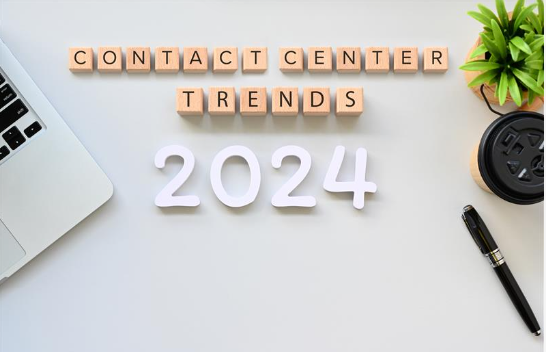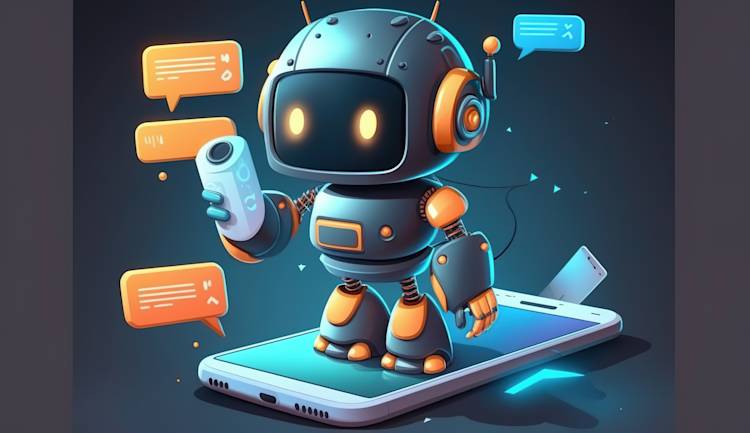People have called up call centers to find answers for decades now. Typically, an IVR menu greets them and descends into annoying elevator music which is quite frustrating, to say the least.
“Oh god, don’t they have anything besides call support?! I wish I could find help elsewhere!”, they wonder.
Even to you as a customer, this question probably hits too close to home.
Customers expect to find help on more channels than just phone — and that’s where contact centers come in. To many of us, call center and contact center might sound like they mean the same thing, but that’s not true. So, for you to figure out which one’s the best, we need to settle the central debate of call center vs contact center. Let’s get right into it.
- What is a call center?
- What are the advantages of a call center?
- Limitations of a call center
- What is a contact center?
- Advantages of contact centers
- Limitations of a contact center
- Key differences between call center and contact center
- Technological differences between contact center and call center
- Call center or contact center — which is better for customer service?
What is a call center?
A call center is a centralized facility where service agents provide support to customers over the phone. Usually, the call center houses multiple agents with individual telephonic systems to talk to customers.
Mainly, there are two types of call centers:
1. Inbound call center
An inbound call center receives all incoming calls from customers and works to guide confused users, resolve complaints and take feedback. The inbound call center delivers services like tech support, upgrades/renewals/cancellations and appointment bookings. The main KPIs for an inbound call center uses to measure its efficiency are:
first-call resolution
average resolution rate
customer satisfaction
2. Outbound call center
Whereas, an outbound call center initiates calls to customers, clients, or prospects. The purpose of these calls is usually for sales, surveys, telemarketing, lead generation, debt collection and appointment reminders.
Call centers typically use features like auto dialer, automatic call distribution, and call monitoring to provide call center services.
Learn More: Different types of call centers and their functions
What are the advantages of a call center?
Call centers were a giant leap to improve customer service delivery. Here are a few benefits of a call center.
Firstly, call centers are adept at performing such use-case-specific tasks like sales and telemarketing.
Secondly, call centers humanize customer service since agents have 1-on-1 conversations with customers.
Call centers also help businesses collect real-time feedback from customers after each service call.
As it is with most things in this world, call centers have their benefits and drawbacks
Limitations of a call center
Call centers often pay attention only when problems crop up for customers. Their passive approach to customer service often leaves customers feeling ignored and unimportant.
Only 33% of customers feel agents know or care about what they want and need.
Some of the disadvantages of a call center are:
Customers can only contact call centers through phone calls, which may lead to the loss of valuable customer data.
Call centers struggle with reducing call center attrition when agents quit their often monotonous and stressful jobs.
They can be expensive to operate because they require a heavy investment in maintaining a real-estate facility and coaching customer service agents.
Contact centers are a step ahead of call centers. They look at customer services from a more holistic viewpoint. Let’s take a closer look.
What is a contact center?
A contact center, as the term suggests, lets customers reach out and get help from every channel of contact — not just by phone. While customers want more accessible customer service, brands are rethinking customer experience from multiple angles. That’s how contact centers come into play.
Customer expectations are dynamic. And newer technologies today are helping old, outdated call centers to keep up with them.
Your modern consumers are like acrobats, who are simply not limited to a single channel. They hop between platforms — and you need to ensure you stay agile and responsive on all of them. Let’s take examples of how a contact center would render an omnichannel customer service.
Customer conversations from paid ads via Instagram DMs
Product-related questions on in-app or website support
Critical, time-sensitive issues via phone calls
Annual sale promotions through SMS and WhatsApp
The two most common types of contact channels are:
Multichannel: use multiple, yet disconnected channels of communication
Omnichannel: use multiple and integrated channels to ensure seamless knowledge transfer
Advantages of contact centers
To the 22% of service leaders who feel they are unable to unify and deliver integrated service experiences, contact centers offer freedom. Here are a few advantages of a contact center:
Customers can reach out for help from any channel they want, which augments their service experiences
Unified contact centers with a single view of the customers deliver relevant and helpful solutions.
Multiple-touchpoint interactions equip agents with user insights which result in consistent and proactive customer service.
In-depth customer knowledge also boosts productivity of contact center agents.
Limitations of a contact center
Well, a difference between call center and contact center is that agents in the latter might find managing multiple channels challenging. You’d also need to constantly train agents to ensure they stay adept using every contact channel.
Moreover, a contact center uses multiple capabilities to empower agents to deliver delicately woven experiences that flow seamlessly between channels — and that mightcome in at a hefty price.
In other words, it is vital to upskill the team and update the tech stack if you want to future-proof your contact center.
Key differences between call center and contact center
The key difference between a contact center and a call center narrows down to the type and the number of channels each use. While call centers only use traditional telephonic systems to deliver customer service, contact centers rely and harness the power of multiple digital channels customers frequent today.
Here’s a rundown of the differences between a call and contact center.
Criteria | Call Center | Contact Center |
Communication Channels | Legacy phone systems | Wide array of digital channels |
Agenda | Provide singular, one-off solutions | Build stronger customer relationships with solutions and experiences that glide through different channels effortlessly |
Approach | Reactive — agents only deliver help when prompted | Proactive and reactive — agents not only respond to users but proactively come up with solutions that fix problems during any stage of the customer journey |
Agent Dependence | Intensely rely on individual performances of each agent | Contact center automation can handle repetitive tasks, requiring agents to step in for critical cases |
Scalability | Hard to boost call center capacity | Easier to scale as demand increases, without incurring additional overheads |
Technological differences between contact center and call center
Both customer service facilities are built to serve a specific way. Before we jump into the key differences between the two, let’s see how their technical capabilities vary.
Call Center Technologies | Contact Center Technologies |
Interactive Voice Response (IVR) and Automatic Call Distribution (ACD) redirect call to an agent through | Customizable agent interface to optimize tasks and manage interactions from a single space |
Call routing to deflect inquiries based on caller’s intent | Omnichannel routing to pull in inquiries from various channels and deflect them based on factors like user intent, complexity of the issue and agent’s skills |
CRM integration to fetch basic user information | Workflow automation to track, analyze, report and optimize contact center processes |
Automatic call dialer to call and queue up customers during outbound reach outs | Team collaboration to ensure synergy and enable agents and supervisors to interject when required |
Call monitoring to listen in on and analyze conversations | Deep AI-powered analytics that help you measure performance across channels |
Call center or contact center — which is better for customer service?
The answer to this is that it’s subjective.
Choosing a call center or a contact center depends on your customer service goals and how you want to interact with your customers. If your communication needs are telephonic and fairly linear, a call center with queueing, routing and auto dialing can be an affordable and efficient solution. It’s also important to keep in mind that call centers work best for businesses that aren’t looking to drastically scale up their service operations.
A contact center is perfect when you need to provide multiple service channels to your customers and ensure that they receive consistent support across all of them. Contact centers are also ideal if building stronger relationships with customers and superior brand recall are on your radar.
Frequently Asked Questions





